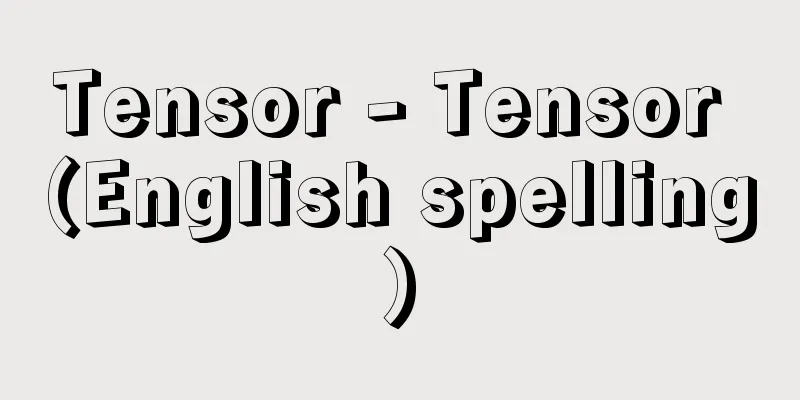Hubble's Law

|
This law indicates that the more distant a galaxy is, the faster it is receding from our Galaxy. In 1929, E. Hubble, who was measuring the radial velocity of a galaxy from its spectrum with the 100-inch telescope at Mount Wilson Observatory, discovered that all galaxies except for a few nearby galaxies are moving away from our Galaxy, and that there is a proportional relationship between the recession velocity V (kilometers per second) and the distance r (Mpc, 1pc is 3.3 light years) to that galaxy, V = Hr . Here, H is a proportionality constant, named the Hubble constant, and in the early 2000s, it was found to be 71km/sec/Mpc. This proportional relationship is called Hubble's law of galaxy recession, and is still widely used today as the only way to determine the distance r of a very distant galaxy by measuring the recession velocity V. Hubble's law indicates that the universe is expanding, and was already predicted theoretically in 1922 by A. A. Friedman based on the theory of general relativity. This discovery of the expansion of the universe meant that the universe started out in a very small and dense state, leading to G. Gamow's proposal of the Big Bang theory in 1946. In 1965, Penzias and Wilson discovered the Cosmic Microwave Background Radiation (CMB, also known as cosmic microwave background radiation, cosmic blackbody radiation, or 3K radiation), establishing the Big Bang theory. Hubble's law originally determined the distance of galaxies based on the period-luminosity relationship of variable stars, so it was limited to nearby galaxies within a few tens of millions of light years in the immediate vicinity of our Milky Way, but in modern times, new methods of determining distance based on the brightness of supernovae and the brightness of giant cD-type elliptical galaxies in galaxy clusters have been developed, making it possible to study galaxies even at distances of several billion light years. As a result, research into the global structure of the universe, such as how the expansion speed of the universe has changed over time, has begun to make great progress. The reciprocal of the Hubble constant, 1/ H , represents the time since the expansion of the universe began (the age of the universe), and calculated from the above value, it is 13.7 billion years (with an error of 1%). This value is considered to be essentially consistent with the age of globular clusters and the age derived from the theory of element synthesis in the early universe. Around 1980, it was discovered that the measured values of the Hubble constant differed greatly depending on the direction of observation. The speed of the universe's expansion is not isotropic, but varies depending on the direction. After intensive investigation in the 1990s, it was discovered that this is because the local group of galaxies, which includes the Milky Way and the Andromeda Galaxy, is moving at a speed of about 600 kilometers per second toward the constellation Centaurus in the southern hemisphere. This movement has also been confirmed by observations of the directional dependence of radio wave intensity, known as the cosmic microwave background radiation. This motion is thought to be the result of the Local Group being gravitationally pulled by a huge gravitational source (the Great Attractor) in the constellation Centaurus since the formation of the Local Group. However, this gravitational source is located exactly in the direction of the galactic plane (the Milky Way) and cannot be observed because its light is blocked by dark nebulae, so its existence has not yet been confirmed. This is one of the observational themes that is expected to be solved in the early 21st century. [Kenichi Wakamatsu] "How Far Does the Universe Extend?" by Hori Genichiro (1986, Iwanami Shoten)" ▽ "Experimental Astronomy Workbook, by Roger B. Culber, translated by Hasegawa Toshio (1988, Koseisha Koseikan)" ▽ "Modern Astronomy Lectures 10: The Universe and Black Holes, revised edition, edited by Matsuda Takuya (1990, Koseisha Koseikan)" ▽ "Cosmic Ripples: Behind the Scenes of the Latest Cosmology, by Michael Rowan Robinson, translated by Ikeuchi Ryo (1995, Springer-Verlag Tokyo)" ▽ "How the Universe Begins and Ends: A Storm of Cosmological Research, by Dennis Overby, translated by Torii Shoji, Yoshida Kenji, and Ouchi Tatsumi (2000, Hakuyosha)" ▽ "The Birth of Time, the Birth of the Universe, by John Gribbin, translated by Tajima Toshiyuki (2000, Shoeisha)" [References] | | | | | | | | | | | | |Source: Shogakukan Encyclopedia Nipponica About Encyclopedia Nipponica Information | Legend |
|
遠方の銀河ほど速い速度でわが銀河系から後退していることを表す法則。ウィルソン山天文台の100インチ望遠鏡で銀河のスペクトルからその視線速度を測っていたE・ハッブルは、1929年、いくつかの近くの銀河を除くと他のすべての銀河は、わが銀河系から遠ざかるように運動をしており、後退速度V(キロメートル/秒)とその銀河までの距離r(Mpc,1pcは3.3光年)との間に、V=Hrという比例関係が成り立っていることを発見した。ここでHは比例定数で、ハッブル定数と名づけられ、2000年代初頭の観測では71km/sec/Mpcである。この比例関係は銀河の後退に関するハッブルの法則とよばれ、非常に遠方にある銀河では、後退速度Vを測定することにより、距離rを求める唯一の方法として、現在でも盛んに用いられている。 ハッブルの法則は、宇宙が膨張していることを示すもので、1922年にすでにA・A・フリードマンが、一般相対性理論に基づいて宇宙の膨張を理論的に予言していたものである。この宇宙膨張の発見は、宇宙が最初は非常に小さく高密度の状態から出発したことを意味することとなり、1946年、G・ガモフがビッグ・バン宇宙論を提唱することとなった。1965年、ペンジアスとウィルソンは宇宙背景放射Cosmic Microwave Background Radiation(CMB。宇宙マイクロ波背景放射、宇宙黒体放射、3K放射ともいう)を発見し、ビッグ・バン宇宙論を定着させた。 ハッブルの法則は、初め銀河の距離を変光星の周期‐光度関係に基づいて決めていたため、わが銀河系のすぐ周辺部のわずか数千万光年以内の近距離の銀河のみに限られていたが、現代では超新星の明るさや銀河団のcD型巨大楕円(だえん)銀河の明るさなどに基づく距離決定の新しい方法が開発され、数十億光年の距離にある銀河についてまでも研究することが可能となった。その結果、宇宙の膨張スピードが時間とともにどのように変化してきたのかとか、宇宙の大局的構造についての研究が大きく進み始めている。 ハッブル定数の逆数1/Hは、宇宙膨張が始まって以来の経過時間(宇宙の年齢)を表しており、前記の値から計算すると、137億年(誤差1%)となる。この値は、球状星団の年齢や宇宙初期における元素合成の理論から導かれる年齢とは、本質的に矛盾しない値と考えられている。 ハッブル定数の測定値が、観測方向によって大きく食い違っていることが1980年ごろにわかってきた。宇宙の膨張速度は、等方的ではなく、方向によって異なっているというのである。1990年代に精力的に調査した結果、これは銀河系やアンドロメダ銀河を含む局所銀河群が、南半球のケンタウルス座の方向に向かって秒速約600キロメートルで運動しているためであることがわかった。この運動は宇宙背景放射とよばれる電波強度の方向依存性の観測によっても確認されている。 この運動は局部銀河群の形成以来、ケンタウルス座にある巨大な重力源(グレート・アトラクター)によって局所銀河群が重力的に引っ張られ続けたためと考えられている。しかし、この重力源は、ちょうど銀河面(天の川)の方向にあって、暗黒星雲で光が遮られているため観測できず、その存在はいまだ確認されていない。21世紀初頭に解決が期待されている観測テーマの一つである。 [若松謙一] 『堀源一郎著『宇宙はどこまで広がっているか』(1986・岩波書店)』▽『ロジャー・B・カルバー著、長谷川俊雄訳『実験天文学ワークブック』(1988・恒星社厚生閣)』▽『松田卓也編『現代天文学講座10 宇宙とブラックホール』改訂版(1990・恒星社厚生閣)』▽『マイケル・ロワン・ロビンソン著、池内了訳『宇宙のさざなみ――最新宇宙論の舞台裏』(1995・シュプリンガー・フェアラーク東京)』▽『デニス・オーヴァバイ著、鳥居祥二・吉田健二・大内達美訳『宇宙はこうして始まりこう終わりを告げる――疾風怒濤の宇宙論研究』(2000・白揚社)』▽『ジョン・グリビン著、田島俊之訳『時の誕生、宇宙の誕生』(2000・翔泳社)』 [参照項目] | | | | | | | | | | | | | | |出典 小学館 日本大百科全書(ニッポニカ)日本大百科全書(ニッポニカ)について 情報 | 凡例 |
>>: Hubble - Edwinn Powell Hubble
Recommend
Ophion - Ophion
…Therefore, the influence of theories about the o...
Kasahoko
…A fancy float that appears at the festival (May ...
Incisor - Itokiriba
〘 noun 〙 (from the fact that they are used to bite...
Gelechiidae
…A general term for insects belonging to the fami...
Isagawa Shrine
A shrine located in Honkomoricho, Nara City. The d...
Meishin Expressway - Myojin
Among the shrines in Japan, it refers to shrines ...
Fatherland Liberation Association
An anti-Japanese coalition of Koreans in Manchuria...
Giorgi, G. (English spelling) GiorgiG
…A type of unit system belonging to the metric sy...
Kanpei's Last Words - Kanpyo's Last Words
In 897 (Kanpei 9), Emperor Uda sent his 13-year-o...
Instrument flight rules (IFR)
A type of flight procedure for aircraft, in which ...
Gakuonji Temple
A temple located in the south of Hongo-cho, Toyota...
abyssal gap
…(3) A large oceanic mountain system of global sc...
Tobun Fujimoto
Date of birth and death unknown. Kabuki playwrigh...
Marcomanni
…But the plague brought by the Eastern expedition...
Heaven and Earth
A recitation of 48 characters in which all the ka...









